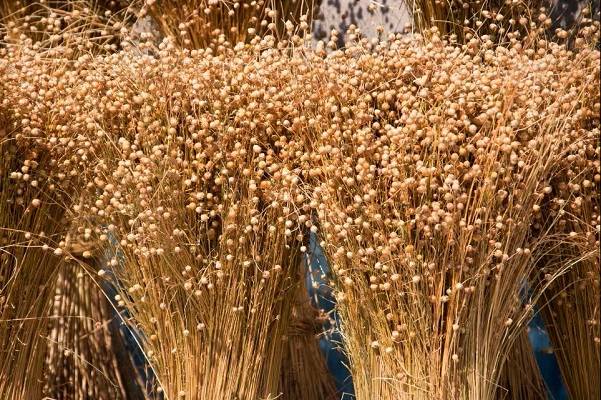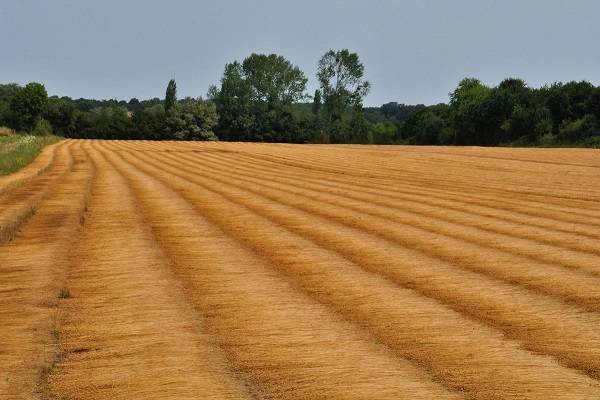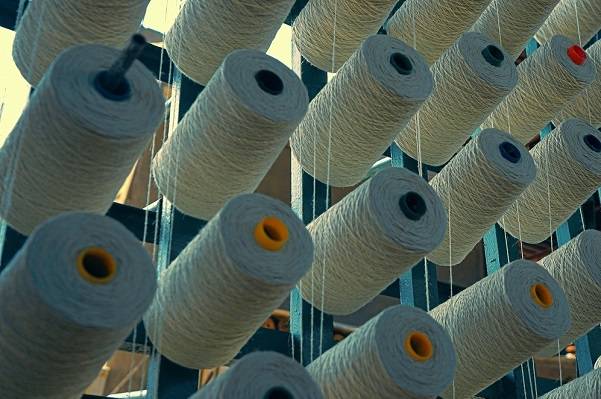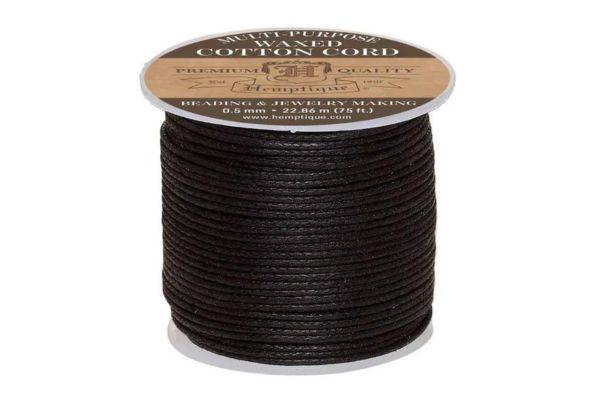THREAD THROWDOWN
Linen Thread Vs. Cotton Thread: Comparison of Top 10 Features
Learn More About the Major Properties of Linen & Cotton, Which Thread to Use & How Wax Treatment Enhances Their Qualities

Innovation & Quality
Developing and supplying premium-quality, sustainably grown, consumer products
100% Natural
Organically Grown and Ethically Sourced
hemp and other natural fiber products
Shipping
We offer fast shipping
Your order out within 1-3 days
Wholesale
Visit our wholesale portal to register or login to your account
Arts and crafts like jewelry making, hand sewing, leather stitching, or beading are pleasurable and relaxing activities that can yield fantastic results when you do them properly. To do them right and to achieve the desired look, you have to start by selecting the right supplies. The tools you use are very important because they can determine the ease or complexity of crafting experience, as well as the overall quality of the finished product. For instance, the type of sewing thread can influence the quality, durability, and look of your craft. However, for beginner crafters, it may feel overwhelming to learn just how many different threads there are on the market. While lots of materials are available, waxed linen thread and waxed cotton thread are especially popular among hobbyists due to their amazing properties.
In this article, we will explore the differences and similarities between waxed linen thread and cotton thread, as well as their prominent features and benefits. We will also offer information on different wax types and care instructions. By the time you read this article you should be able to decide which thread is best suited for your project. In the end, when you select quality materials and craft supplies that meet your project’s requirements, your skill level, your preferences, and your budget, you can accomplish wonderful results and create unique bracelets, DIY leather bags, necklaces, handmade wallets, custom-made earrings, handcrafted jewelry, and other handmade items.
Must-Have Craft Tools: 100% Natural & Earth-Friendly Supplies Made Of Premium Linen & Cotton Fiber
Infuse your creative ideas with life using Hemptique’s supreme quality craft supplies. Whether you are a beginner crafter or an experienced craftsman, our naturally sourced threads and cords will make your crafting activity enjoyable and easy. Our selection includes waxed cotton cord and waxed linen thread, ideal for leather and upholstery work, but also for more delicate projects such as bracelet making, DIY necklace crafting, beading, lacing, tatting, and many more. These threads are lightly coated with wax not only to enhance their strength, durability, and resistance to moisture, but also to make your work effortless. Our premium linen thread is made of 100% flax fiber and comes in several thicknesses. It is extremely durable, making it ideal for sewing tough and heavy materials. If you are working on DIY projects that require more intricate work, opt for our 0.5mm waxed cotton cord. Designed specifically for jewelry making, it comes in several colors, drapes beautifully and does not fray. Our eco-friendly merchandise is available for purchase by individual consumers and businesses. For additional information, reach us at (760) 602-4864, ext. 403 and 405. For bulk purchases and volume pricing, apply for a wholesale account.
Linen Thread Vs. Cotton Thread: 10 Main Features Compared
The type of thread you use for your jewelry or sewing craft can make a big impact on how the final item looks or how reliable the knots and stitches are. The best way to ensure that you are picking the perfect thread is to consider its properties and see how well they match your craft’s requirements. Below, we are highlighting several major characteristics of the two most preferred threads in the realm of craftsmanship. Continue reading to discover how wax treatment improves the functionality and performance of the fibers.
1. Material origin
Linen thread is made from the bast, cellulose fibers of the flax plant (Linum usitatissimum), which are known for their exceptional strength and longevity. The thread is then lightly coated with wax in order to improve its strength, moisture resistance, and easy handling.
2. Strength & durability
Waxed linen: Compared to cotton, linen is twice as strong. The wax treatment further increases its strength, making waxed linen thread perfect for crafts that demand sturdy stitches, such as leatherwork, upholstery, or heavy canvas crafting.
3. Water resistance & outdoor use
Waxed linen: Linen is naturally moisture resistant, and wax treatment enhances this fantastic property. It further prevents water absorption and makes waxed linen thread adequate for marine and outdoor applications, where the items are frequently exposed to water.
4. Aesthetics
Waxed linen: Untreated linen has slight natural sheen. Waxed linen string is of rustic, artisanal appearance with beautiful shine that highlights hand-stitched details.
5. Environmental impact
Waxed linen: Linen is an eco-friendly product derived from the flax plant. Compared to cotton, its cultivation requires less water and pesticides, which makes it a sustainable choice for environmentally-conscious hobbyists.

6. Cost & accessibility
Waxed Linen: When it comes to cost, waxed linen thread is usually higher priced than cotton due to its labor-intensive manufacturing process and limited availability.
| Fiber origin | Natural fiber made from flax plant | Natural fiber made from cotton plante |
| Strength & Durability | Remarkably strong and durable. Perfect for leather crafting and upholstery. | Ideal for general sewing but less durable when under stress. |
| Water Resistance | Suitable for outdoor and marine applications when coated with wax. | Unless treated with waterproof agents, it absorbs moisture and is susceptible to mildew and rot in moist conditions. |
| Aesthetic Appeal | Artisanal look with subtle sheen enhances stitching work. | Soft, matte finish. Recommended for projects with less visible stitching work. |
| Environmental Impact | Eco-friendly and biodegradable. It’s manufacturing requires resources and pesticides. | Cotton is biodegradable but typically demands substantial resources and chemicals for cultivation. |
| Cost | Typically higher priced due to its complex manufacturing process. | Budget-friendly and widely available. |
| Suitability for Outdoor Use | Highly suitable for outdoor use due to its resistance to weathering. | Avoid exposing to outdoors, unless treated with weatherproof treatment. |
| Availability | Not readily available in all brick and mortar locations, but easily accessible online | Most popular choice among crafters; readily available in most locations |
| Compatibility with fabrics | Ideal for working with tougher & denser materials (leather, upholstery fabrics) | Compatible with light & medium natural materials (cotton, hemp, linen) |
| Workability | Due to stiffer nature it requires some effort but does not break or fray easily. | Soft and flexible fiber; suitable for intricate sewing |
| Longevity | Extraordinary longevity due to strong fiber structure | Durable in ideal conditions; long exposures to very moist or dry conditions weakens the fiber |
7. Thread handling & workability
Waxed linen thread: Famous for its stiff and durable properties, it is ideal to be used for crafts involving tougher and denser materials. The wax layer allows for easier handling and passing through heavy materials. Although stiffness prevents fraying and breaking of thread, it may require extra effort when sewing delicate or tight stitches.
8. Compatibility with various fabrics
Waxed linen thread: Appropriate for use with robust, dense fabrics like leather, heavy-duty canvas, and upholstery materials. Remarkable strength and resilience make it a popular choice for DIY projects that demand long life and resistance to frequent use, such as bags, wallets, purses, shoes, or outdoor gear.
9. Longevity
Waxed linen thread: Waxed linen thread has exceptional longevity because its fiber has robust structure. It successfully resists stretching and maintains its strength under tension. This is essential for handicrafts that are frequently used or environmentally exposed. The wax layer expands its lifespan additionally by protecting against moisture and mildew.
10. Care & maintenance instructions
Waxed linen thread: Handmade items made with waxed linen have to be cleaned and maintained carefully so that the qualities of the fiber can be preserved for a long time. Avoid machine washing and soaking in water, unless indicated by manufacturer. Opt for spot cleaning or hand washing using mild soap and cool water. To avoid wax melting, avoid prolonged exposure to heat.
Recommended product: Hemptique’s Premium Waxed Linen Thread
Premium linen waxed thread is made from the finest Egyptian flax fiber. 100% natural, this thread is a multi-purpose, eco-friendly craft supply that excels in durability and longevity. The reason why it’s a popular choice among crafters and hobbyists is its amazing qualities, such as exceptional strength, sunlight resistance, fast drying, natural resistance to mold and mildew, and excellent fiber structure. It stays tight under pressure, knots well, and so many more. It comes on a vintage wood spool and is offered in two sizes: 12/3 (approx. 1mm thick) and 18/3 (0.6mm). Coming soon 25/3 (0.4mm). It can be washed at 60°C and ironed at high. Due to its versatile properties, waxed linen thread can be used for a wide range of applications including hand sewing, leather stitching, outdoor décor & gear, bookbinding, beading, tatting, embroidery, nautical environments, and more!

Recommended product: Premium Quality Waxed Cotton Cord By Hemptique
Made from high-quality cotton, coated with a light layer of wax, our 0.5mm waxed cotton cord is soft, strong, flexible, resistant to fraying, and knots securely, making it an ideal supply for various arts & crafts. It comes in 4 colors (black, brown, natural, and white) and is 75ft (22.86m) long. Hemptique’s multi-purpose waxed cotton thread is designed for jewelry making and other delicate crafting projects like braiding, beading, necklace making, bracelets crafting, lacing, earrings designing, and similar artisanal hobbies. Waxed cotton cord is a perfect choice for those crafters who are looking to improve their jewelry-making skills using first-class supplies.

Thread Wax Types
Many sewing, jewelry, or beading artisans wax their threads even if the thread has been pre-waxed. Re-waxing doesn’t take a lot of time, but it can significantly prolong the life cycle of your beadwork or leatherwork. There are different types of waxes that can be used to treat the thread in order to improve its durability, moisture resistance, and ease of handling.
Beeswax
Main characteristics:
- Sustainable - Beeswax is an eco-friendly choice, as it is a natural product made by honeybees.
- Excellent coating – Creates thick, protective layer that improves strength, but also protects from scents, odors, and pollutants.
- Waterproofing - Beeswax is ideal for use in wet settings as it has natural water-repellent properties.
Pros:
- Longevity – Beeswax effectively protects the thread from fraying and breaking.
- Easy handling - Helps the thread glide through fabrics easily making your sewing experience effortless.
- Suitable for outdoor use - Excellent option for DIY projects that will be exposed to environmental elements.
Cons:
- Sticky residue - It can be inconvenient to find wax residue on needles or fabric.
- Variability - Quality varies based on processing of the beeswax.
Soy Wax
Main characteristics:
- Vegan & sustainable - Excellent alternative for those who want to avoid animal products. Soy wax is made from soybeans
- Easy application - Less sticky than beeswax, soy wax provides smooth finish that enhances thread’s features.
- Moderate moisture resistance – Soy wax safeguards the fiber against moisture, although not as well as beeswax.
Pros:
- Eco-friendly - This is a renewable and biodegradable wax.
- Less residue – Allows easy sewing without excess residue.
- Indoor projects – Soy wax is ideal to be used for handmade items which will be kept inside, away from water exposure.
Cons:
- Low resistance to moisture - Not to be used for crafting items which will be heavily exposed to water.
- Not suitable for outdoor projects - Soy wax may not be as durable as beeswax under harsh weather conditions.
How to choose the right wax
In order to determine which type of wax will be best suited for your DIY project, you should think of the specific needs of your project:
- For durability and water resistance – Choose beeswax for projects like leatherworking, outdoor crafts, or maritime handiwork.
- For indoor projects and apparel – Choose soy wax for quilting, garment making and indoor decorations, since it is less sticky.
Understanding The Differences Between Natural And Man-Made Fibers
When choosing supplies for your craft, it is extremely important to know the differences between natural and synthetic materials, as they can impact the longevity and the appearance of your finished product. Although man-made fibers have amazing benefits, you should also be aware of the challenges you would face, in order to be able to make an informed decision.
Conclusion: Choose Natural Threads Coated With Wax For Durable & Earth-Friendly Crafting Experience
Having waxed thread in your sewing toolkit allows you access to a string with enhanced functionality and performance combined with the benefits of natural fibers. Whether you choose linen thread or cotton thread, you will be making a contribution towards a greener planet while also enjoying the benefits of strong, durable, and long-lasting fiber. Wax coating smooths out and straightens out the fiber enabling you to sew or craft without a lot of effort, while being gentle on your hands.







